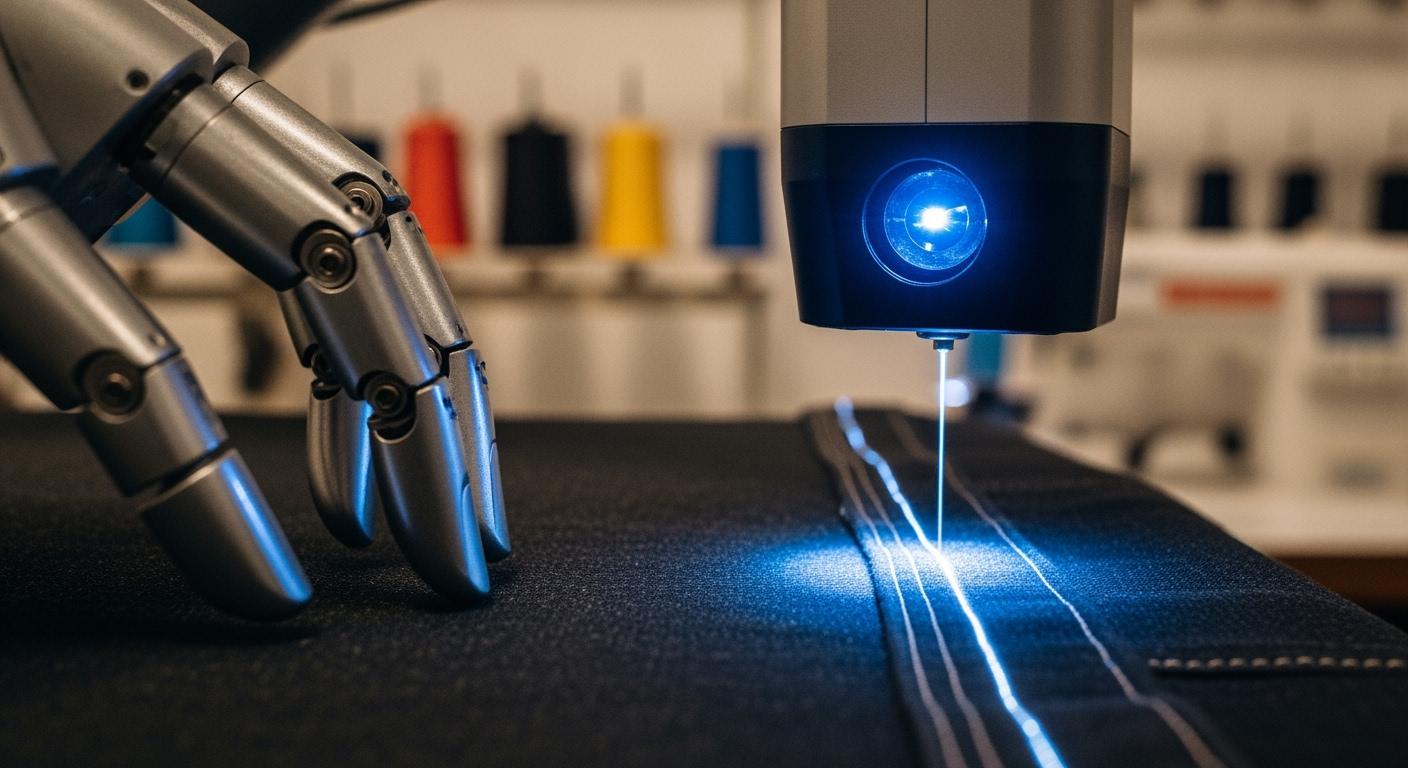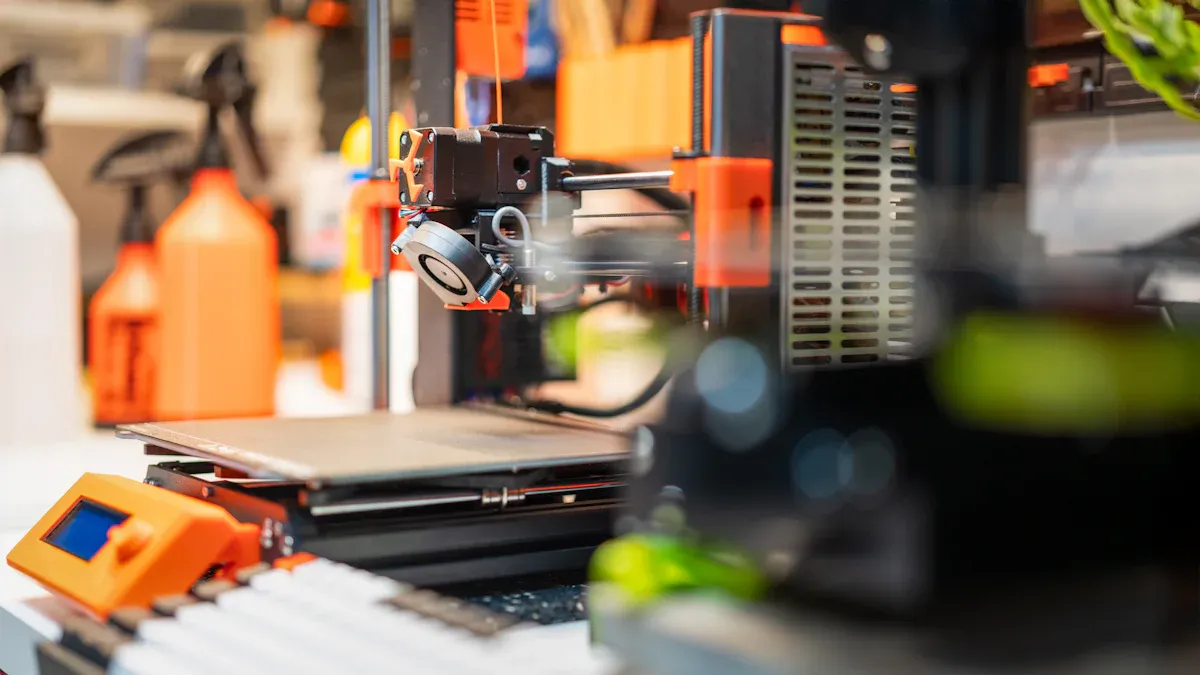
Manufacturing leaders constantly face challenges with seam quality. Imperfect seams lead to costly errors and inconsistent product quality. AI changes this entire process. AI-powered defect detection provides a new level of quality control. These AI-powered solutions offer superior assurance.
This guide explains how AI-based quality assurance directly improves products, cuts waste, and strengthens financial results for any production line.
The Limits of Manual Inspection

For decades, manufacturers have relied on human inspectors for quality control. This traditional approach, however, has significant drawbacks. It struggles to keep pace with modern production demands and often fails to deliver the consistent quality that brands require. Understanding these limitations is the first step toward finding a better solution.
Human Error and Inconsistency
Human inspectors are essential but also variable. An inspector's ability to spot stitching defects depends on their experience and focus. Fatigue is a major factor. An inspector’s accuracy can drop significantly during an 8-hour shift, leading to missed flaws. Studies show that manual inspection can miss 20-30% of defects. This inconsistency affects overall product quality. An AI system, in contrast, provides the same high-level detection 24/7 without fatigue, ensuring every product meets the same standard.
High Labor and Training Costs
Building a skilled inspection team is expensive. Companies invest heavily in hiring and training personnel for garment quality control. Retaining these skilled workers adds to the long-term operational costs. To maintain high efficiency, many facilities run multiple shifts. This approach multiplies labor expenses. These costs directly impact the final price of the product and the company's profitability.
Production and Inspection Bottlenecks
Manual quality inspection processes often slow down the entire production line. Inspectors can only check one item at a time, creating a bottleneck that limits throughput.
Manual workflows often hide problems that disrupt production. When a defective item is found, it must be reworked. This pulls resources away from new production and further slows the line. The lack of real-time data means managers cannot see these bottlenecks until they cause major delays.
Failure to Detect Micro-Defects
The human eye has its limits. It cannot consistently see very small stitching defects. This is a critical weakness in stitching defect detection. Advanced AI vision systems excel at this task. They can identify flaws smaller than a single pixel, such as tiny variations in color or thread tension. This level of defect detection is impossible for a human inspector to achieve consistently, making AI a superior tool for ensuring flawless quality.
The Rise of Intelligent Quality Assurance

Manual inspection has clear limits. Modern manufacturing needs a smarter, more reliable solution. This is where intelligent quality assurance comes in. It uses advanced technology to create a new standard for quality control. This system moves beyond simple checks to offer a comprehensive approach to quality assurance.
The Role of Machine Vision AI
Machine vision AI is the engine behind modern ai-powered defect detection. It combines several key technologies to see and analyze products with superhuman precision. This camera-based quality control system works by integrating core components.
- High-Resolution Imaging: Special cameras capture detailed images of every seam.
- Advanced Lighting: Uniform light sources highlight the fabric and thread, making tiny flaws visible.
- Processing Unit: A powerful computer analyzes the image data in an instant.
Machine Vision AISoftware: This is the brain of the operation. TheAIsoftware interprets the images to find defects.
The machine vision AI learns what a perfect product looks like. It trains on thousands of images of good seams. This training helps the machine vision AI understand normal variations in fabric and stitching. It learns to tell the difference between an acceptable variation and a true defect. For example, the machine vision AI can tolerate natural changes in yarn thickness but will flag an unexpected snag as a problem. This ai-powered image analysis makes the defect detection process both flexible and precise. The machine vision AI provides a level of detection that is simply not possible for the human eye.
Real-Time Stitching Defect Detection
One of the biggest advantages of ai-powered defect detection is its speed. The system provides real-time defect detection on the production line. This immediate feedback prevents defective products from moving to the next stage. It removes inspection bottlenecks and creates a seamless production flow. This real-time quality control leads to significant cost savings by reducing waste and labor expenses.
The machine vision AI excels at stitching defect detection. It identifies a wide range of stitching defects with high accuracy. The applications of stitching defect detection are vast, covering everything from apparel to automotive textiles.
AIsystems can identify and classify many types of flaws. This ensures every product meets the highestqualitystandards.
| Defect Type | Description |
|---|---|
| Skipped Stitches | The AI detects missing stitches that weaken the seam. |
| Incorrect Tension | It identifies stitches that are too loose or too tight, which can cause puckering. |
| Inconsistent Length | The system flags variations in stitch length that affect appearance and strength. |
| Broken Stitches | AI spots fractured threads that compromise the seam's durability. |
| Misaligned Patterns | It ensures stitch lines follow the intended design perfectly. |
This level of stitching defect detection ensures consistent stitching and superior product quality. The ai-powered defect detection offers a powerful solution for automated inspection.
Centralized Quality Data Management
AI-based quality assurance does more than just spot flaws. It also collects valuable data. Every defect the machine vision AI finds is logged in a central system. This creates a single source of truth for quality data across the entire factory. Managers no longer have to sort through fragmented or conflicting reports from different teams.
This centralized data helps leaders make better decisions. They can access real-time updates from a shared dashboard. This allows them to:
- Track defect trends over time.
- Link defects to specific machines, batches, or shifts.
- Identify recurring issues that need a permanent fix.
For example, if the data shows a rise in skipped stitching defects on a certain line, managers can investigate the specific machine causing the problem. This data-driven approach to garment quality control helps teams make process adjustments and improve operator training. It ensures improvements are shared across the entire organization, not just one line.
Predictive Maintenance for Consistent Output
The data collected by the ai-powered defect detection system has another powerful use: predictive maintenance. The AI analyzes historical machine data, including performance records and vibration patterns. It uses this information to predict when a sewing machine might fail before it actually breaks down.
This proactive approach offers huge benefits. Instead of reacting to unexpected equipment failures, teams can schedule maintenance during planned downtime. This leads to consistent stitching and better seam quality. Studies show this method can reduce unexpected equipment failures by up to 40%. This ai-driven defect detection is key for continuous quality control.
Integrating ai-based quality assurance data with a factory's Manufacturing Execution System (MES) unlocks even more value. This integration allows the AI to optimize production schedules and resource allocation in real time. The result is a significant reduction in unplanned downtime and a major boost in overall efficiency. This advanced camera-based quality control transforms stitching defect detection from a simple check into a tool for process optimization.
The Business Case for AI in QA
Adopting AI technology is a strategic business decision. It delivers a strong return on investment (ROI). The initial setup costs are quickly offset by significant long-term savings. AI-powered defect detection creates a more efficient and profitable manufacturing operation. It provides tangible benefits that strengthen a company's bottom line.
Reducing Waste and Rework Costs
Every defective seam represents lost money. It wastes materials, labor, and time. Manual inspection often finds these stitching defects too late in the process. This leads to expensive rework or scrapped products. AI-powered defect detection identifies flaws the moment they occur. This immediate feedback stops the production of faulty items. It allows operators to fix issues instantly, which dramatically cuts down on waste.
This early defect detection leads to a quantifiable reduction in costs. Factories can significantly lower material and rework expenses.
| Metric | Percentage Reduction |
|---|---|
| Potential Scrap | 12–20% |
| Overall Scrap | 15–30% |
By catching errors early, the AI system ensures that resources are used efficiently. This approach minimizes financial losses and maximizes the value of raw materials, directly improving profitability. The quality of the final product also improves.
Boosting Production Throughput
Manual quality control is a common bottleneck in manufacturing. Human inspectors work at a limited speed, which slows down the entire production line. AI systems operate at machine speed. They inspect products much faster than any human team. This eliminates inspection delays and increases overall production throughput. For example, one electronics manufacturer improved its throughput by 6X after implementing AI vision technology.
Automating the inspection process also frees up valuable human resources. This allows companies to reallocate staff to more complex, value-added tasks.
Automation frees up staff for higher-value tasks while streamlining operations. Workers can move to roles like advanced machine operation, finishing, and final packaging.
This shift in labor allocation boosts overall factory efficiency. Studies show that AI implementation can:
- Increase overall production efficiency by 20-30%.
- Boost productivity by up to 30% by automating repetitive tasks.
- Reduce direct labor costs on converted lines by 35%.
This optimized workflow ensures consistent stitching and a faster, more responsive production cycle. The quality control process becomes a seamless part of manufacturing.
Enhancing Brand Reputation
A brand's reputation is built on quality. Customers associate perfect seams and flawless finishing with a premium product. Consistent seam quality is crucial for durability and appearance. It ensures garments hold up during wear and look professional. This attention to detail builds customer trust and loyalty.
AI ensures every item meets the highest quality standards. This consistency is key to protecting a brand's image.
- Superior Products: AI helps create products with higher product quality that delight customers.
- Customer Loyalty: Rigorous quality control leads to repeat business and positive recommendations.
- Brand Trust: Preventing defects like seam rips or needle holes protects the brand from negative reviews.
When every stitch matters, AI-driven defect detection provides the assurance needed to uphold the reputation of high-end labels. This commitment to quality turns satisfied customers into loyal brand advocates.
Analyzing Common Stitching Defects
An effective garment quality control program goes beyond just finding flaws. It helps identify the root cause of problems. The ai-based quality assurance system collects data on every defect. This data allows managers to analyze trends and pinpoint the source of recurring stitching defects. This analytical approach transforms stitching defect detection from a simple check into a powerful tool for process improvement.
The AI can identify a wide range of common stitching defects and help trace them back to specific issues with machines, materials, or operator actions.
| Common Defect | Description | Common Root Causes |
|---|---|---|
| Skipped Stitch | A stitch is missing from the seam line, weakening it. | Wrong needle size, poor thread tension, defective needle. |
| Puckering | The fabric gathers or bunches along the seam. | High thread tension, incorrect stitches per inch (SPI). |
| Uneven Stitch | Stitches are wobbly or have inconsistent length. | Faulty feed dog, inconsistent operator handling. |
| Broken Stitch | The thread in the seam is broken or torn. | Poor quality thread, excessive needle heat, burrs in machine parts. |
| Loose Stitch | Loops of thread are visible on the seam. | Low thread tension, incorrect bobbin case settings. |
This detailed detection and analysis enable teams to make targeted adjustments. They can schedule machine maintenance, improve operator training, or change material suppliers. This proactive approach to quality control ensures consistent stitching and prevents defects from happening in the first place.
AI offers a transformative shift in manufacturing quality control. It delivers superior seam quality, higher efficiency, and significant cost savings, ensuring a better final product. This technology provides the ultimate assurance for production standards.
Leaders can take the first step. Assess current quality processes and identify defect hotspots. With 87% of companies achieving ROI in under one year, now is the time to explore ai-based quality assurance for your production line.
FAQ
How does the AI system learn to identify defects?
The AI trains on thousands of images of perfect seams. This process teaches the system to distinguish between normal fabric variations and true defects. This training ensures high-accuracy defect detection, which leads to superior product quality.
Can this technology work with different types of fabrics?
Yes. The system adapts to various materials, from delicate silks to heavy denim. Advanced cameras and lighting adjust to different fabric textures and colors. This flexibility ensures reliable detection and consistent quality across diverse product lines.
What is the typical implementation time for an AI QA system?
Implementation time varies based on factory complexity. A standard setup can take several weeks. The process includes hardware installation, software configuration, and AI model training. The goal is a smooth integration for immediate quality improvements.
How does AI improve the overall quality control process?
AI automates inspection for 24/7 consistency. It provides real-time data that helps teams find the root cause of issues. This data-driven quality control approach reduces errors and improves the final product.
See Also
Forecasting Textile Equipment Needs: AI-Driven Predictive Maintenance by 2025
Intelligent AI Solutions Revolutionize Fashion Returns for Immediate Efficiency
Optimized AI Routing Algorithms Significantly Reduce Fashion Delivery Times by 22%
Innovative AI in Fashion: Crafting a More Sustainable Global Future
Consolidated Shipments: Elevating Customer Happiness Through Enhanced Delivery Experiences